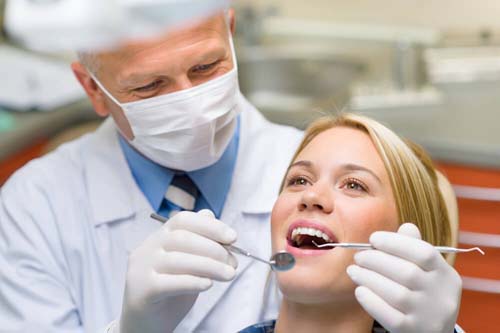Our risks of developing gum disease increases with age. It is not an unavoidable component of aging. Gum disease is a severe issue that can lead to tooth and bone loss, and it also may results in systemic conditions such as heart disease or diabetes.
It is essential for patients to periodically monitor their gums for signs of concern, such as swelling, pockets, bleeding, bad breath, etc. and seek treatment after noticing any symptoms.
Gum disease does not show up in the initial stages. On the other hand, the longer you put off your gum disease treatment, the more likely you will end up requiring a more extensive treatment like Gum surgery.
Nearly 4 out of every 5 patients suffer from some type of periodontal disease in their lifetime. When advanced stage of this disease goes untreated, the condition eventually turns out to be irreversible.
It is a chronic and systemic infection in which the gums start to regress away from the teeth and the infection spreads all through the mouth. As bacteria and tartar begin to attack the roots of teeth, teeth start loosening up their natural support from gum tissue. The buildup of tartar along the roots of tooth is caused by untreated gum disease. It is actually the chief cause of tooth loss in adulthood.
The infection destructively attacks soft tissues and teeth, which ultimately reaches to bone. Patients with chronic periodontitis may require Gum Surgery in San Diego because their bone start getting degenerated, a condition which may also leads to tooth loss.
Many research studies have associated a connection between periodontitis and other health conditions affecting the cardiovascular and immune system. The explanation behind it is that once the infection spreads, it can go into the bloodstream, where the bacteria-ridden compounds can get attached to plaque in the arteries. For patients suffering with immune system suppression, periodontal disease can become difficult to manage.
In San Diego, dentists strongly recommend to seek treatment as the signs of gum disease appear. Some common symptoms related to periodontal disease are:
- Bleeding of gums with slight aggravation (brushing and flossing)
- Red and purple gum tissue
- Pain and discomfort while touching gums
- Pus and sores along the gum line
- Recession of the gums
After analyzing your oral health and the stage of your gum disease, your dentist will develop a treatment plan according to your needs. Periodontal disease treatment often includes deep cleanings to eliminate tartar above and below the gum line, some sort of surgery, and medications to kill bacteria.
So, how can you defend against a disease that doesn’t always show up with obvious warning signs? To know more about your treatment options or schedule an appointment for Gum Surgery in San Diego, seek advice from experienced periodontal team.

